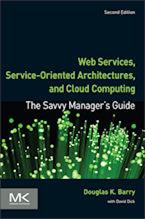Mortgage Industry Standards Maintenance Organization (MISMO)
The mission of the Mortgage Industry Standards Maintenance Organization (MISMO) is to develop, promote, and maintain voluntary electronic commerce standards for the mortgage industry. Established in 1999 by the Mortgage Bankers Association of America, MISMO encourages participation from all sectors of the industry.
MISMO XML specific vocabularies
More information: MISMO website.
Context for Mortgage Industry Standards Maintenance Organization (MISMO)
Related Articles for Mortgage Industry Standards Maintenance Organization (MISMO)
- ACORD
- AdsML Consortium
- Alliance for Telecommunications Industry Solutions (ATIS)
- Clinical Data Interchange Standards Consortium (CDISC)
- FIX Protocol Limited (FPL)
- HR-XML Consortium
- IDEAlliance
- Interactive Financial eXchange Forum (IFX Forum)
- International Press Telecommunications Council (IPTC)
- International Swaps and Derivatives Association (ISDA)
- Meat & Poultry Data Standards Organization (mpXML)
- National Information Exchange Model (NIEM)
- Open Financial Exchange (OFX) Consortium
- The OpenTravel Alliance (OTA)
- Parlay Group
- Petroleum Industry Data Exchange (PIDX)
- PSLX Consortium
- Real Estate Transaction Standard (RETS)
- Research Information eXchange Markup Language (RIXML).org
- Software & Information Industry Association (SIIA)
- SWIFT
Author
Douglas K Barry
Principal
You may use this material for your work or classes. Reprint Policy. Be sure to check the menu at the left for other articles available on this site.
The Savvy Manager's Guide
Douglas K Barry is also the author of a book that explains Web Services, service-oriented architecture, and Cloud Computing in an easy-to-understand, non-technical manner.
Web Services, Service-Oriented Architectures, and Cloud Computing: The Savvy Manager's Guide (Second Edition)
by Douglas K Barry with David Dick
This is a guide for the savvy manager who wants to capitalize on the wave of change that is occurring with Web Services, service-oriented architecture, and—more recently—Cloud Computing. The changes wrought by these technologies will require both a basic grasp of the technologies and an effective way to deal with how these changes will affect the people who build and use the systems in our organizations. This book covers both issues. Managers at all levels of all organizations must be aware of both the changes that we are now seeing and ways to deal with issues created by those changes.

